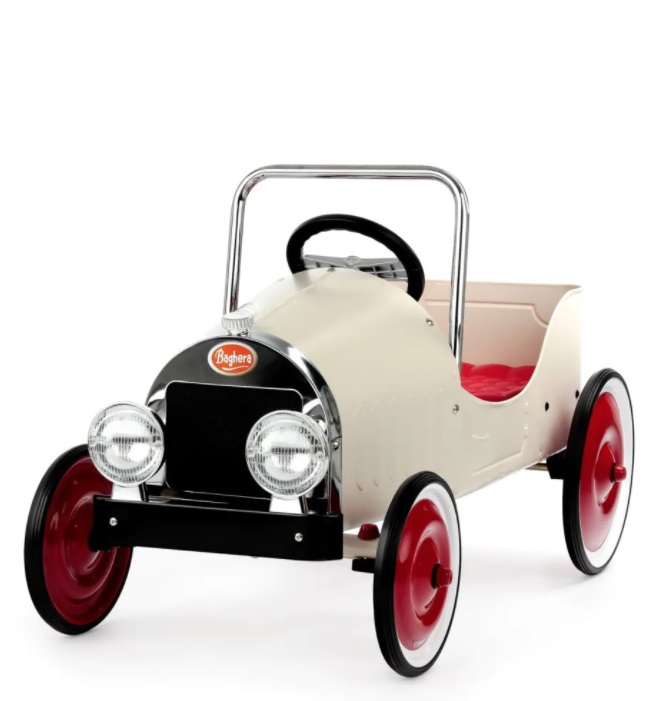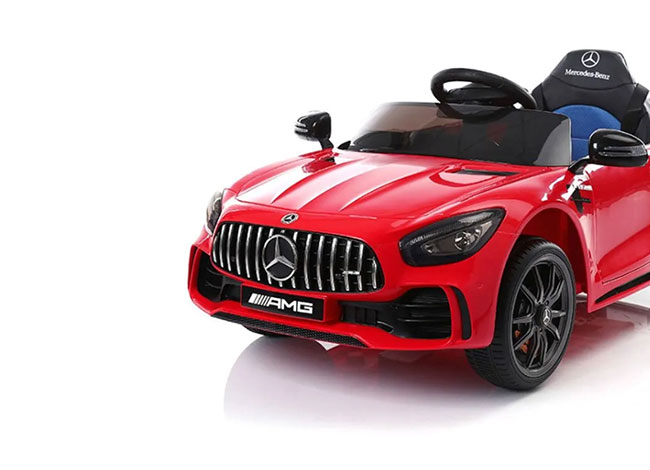Handy News On Deciding On Kids Ride On Cars
Handy News On Deciding On Kids Ride On Cars
Blog Article
What Safety Features On The Ride-On Car Should I Be Looking At? Pros And Pros And
To ensure the safety of your child You should think about the following features. Seat Belts are one of the most essential safety features you need to be aware of.
Seat belts help keep your child secure when riding on the vehicle. It reduces the risk of them falling down or being thrown out of the vehicle during play. These seat belts offer additional security particularly when taking rapid turns or stopping abruptly.
Cons - Some ride-on cars do not include seat belts, specifically ones designed for toddlers. Seat belts may be uncomfortable to children and cause them to refuse to wear them.
Sturdy Construction
Pros: A robust ride-on car made of high-quality components will last for longer and be less likely to fail. This ensures the safety and security of your children. It's sturdy and durable enough to stand up to the demands of playtime.
Pros - Sturdy materials can be expensive and may not be feasible for certain families. Additionally, the more heavy materials may affect the mobility and maneuverability of the ride on car.
Low Center of Gravity -
Pros- Ride-ons with an elongated center of gravity are less likely to tip over, which reduces the chance of accidents. They are more stable and provide more balance, especially during turning and maneuvers.
Cons - Some ride-on cars with a lower center of gravity sacrifice ground clearance and off-road abilities and can restrict their flexibility.
Remote control for parents
Pros: Remote-controlled vehicles allow parents to observe and supervise their child's playing, adding an additional layer of control and security. Parents can intervene in the event of an emergency arises, or navigate tricky terrain or stop collisions.
Cons - Parental remote control can limit a child's autonomy, independence and freedom of play, as they'll rely on the guidance and help of their parents during play. Additionally, remote-controlled vehicles may cost more than manual models.
Speed Limiters
Pros: Ride-ons equipped with speed limiters and adjustable speed settings allow parents to decide on the maximum speed for their car. This reduces the chance of having an accident or collision. They are able to increase the speed to the max as their child's confidence improves.
Cons - Some riders might get used to the slower speeds rapidly. This could cause frustration with the vehicle. Also, the speed limiter may not be available on all models. It could also require an additional feature or accessory.
Safe Start Technology -
Safe start technology minimizes the chance of lurches or sudden jerks which could startle or even destabilize a child. It offers a more comfortable and safer riding experience.
Cons - Models equipped with the safety start feature could cost more than models without. Furthermore, children might feel that the gradual acceleration and deceleration to be less thrilling or exciting than quick stops and starts.
Visibility Enhancements
Pros- Ride-on-cars with improved visibility, such as functioning headlights (or taillights), reflective materials or other features increase visibility. This can be helpful in dimly lit or dim conditions. They improve security by making the car more noticeable to pedestrians or vehicles.
Cons - The visibility enhancements can make the battery more drained or complicate the design of the ride-on cars, thereby increasing the likelihood of malfunctions as well as maintenance problems.
If you consider the pros and cons of each safety option, you can select the ride-on vehicle that is both safe and gives a fantastic play experience for your child. View the best McLaren kids car for more info including ride on digger, car toy toy, ride on toy, car toy toy, remote control childrens car, car for toy, toy car, electric rideons, toy car toy car, toy a car and more. . 
What Is The Difference Between Indoor And Outdoors The Use Of Car Models For Children?
The cars for children are designed with particular features and attributes to fit different settings and use scenarios, indoors or outdoors. Here are a few variations in these car models - Indoor Use Cars
Size and Weight- Cars intended for indoor use will be smaller in dimensions and weigh less which makes them more able to maneuver around tight areas. These include living rooms and playrooms. They are compact enough to fit into narrow spaces, tight corners and also avoid damaging walls and furniture.
Low Ground Clearance Cars that are used indoors have a lower ground clearance so they don't be snagged or stuck by obstacles such as rugs, carpets or thresholds. This ensures smooth and uninterrupted movement across indoor surfaces without fear of getting stuck or tipped over.
Smooth Wheels The wheels on indoor automobiles are typically comprised of smooth substances such as plastic or rubber to offer traction and grip on smooth surfaces such as hardwood floors, laminate flooring or tiles. They are designed to minimize the sound of the vehicle and to prevent scratching indoor surfaces.
Limited Speed - Indoor vehicles are typically limited in speed, to allow for safe and secure driving even in tight spaces. This can prevent accidents and collisions with furniture such as walls or obstructions found inside.
Outdoor Use Cars -
Durable Construction - Cars that are designed to be used outdoors are constructed using durable materials like strong plastic or steel to stand up to rough handling and elements of the outdoors like sunlight, humidity and temperature fluctuations. They are less likely to suffer from wear and tears caused by exposure to outdoor elements.
Higher Ground Clearance - For outdoor use, cars have higher ground clearance to navigate bumps, uneven terrain or obstacles found in the outdoors. They can traverse rough surfaces such as gravel, asphalt, grass, or dirt without getting stuck or damaged.
Traction Tires -- The tires on cars that are used outdoors often feature treads or patterns created to increase grip and traction when driving on surfaces that are uneven or slippery. This aids in maintaining control and stability when driving on uneven terrain.
Weather-resistant components - Cars designed for outdoor use could include weather-resistant components like sealed electronic components, waterproof casings or corrosion-resistant materials. These elements safeguard the car from moisture and environmental harm. These vehicles can take on rain, mud or even puddles without loss of performance.
Outdoor-use cars have greater speed limits to allow for large areas and distances. Children can have an exciting and thrilling ride.
Parents can choose a vehicle for their children that meets their needs, whether indoors or out, by considering the design and features. This will provide the safety, enjoyment and long-lasting experience for children. See the recommended click here on ride on toys for website examples including ride a toy, two seater childrens electric cars, toy a car, electric rideons, toy car, childs car toy, kidscars, 2 seater electric cars, remote control childrens car, two seater electric cars and more. . 
What Can I Do To Find Out More About The Experiences Of Parents With Ride-On Car Brands?
There are ride-on car reviews online by using a variety of sources and platforms. Online retailers are an excellent source to start your investigation.
Check out online stores like Amazon, Walmart, or Target which allow customers to leave reviews and ratings for products they have purchased. Search for models that ride on cars that have a large number of ratings and positive reviews.
Manufacturer Websites -
Explore the official websites of ride-on vehicle manufacturers to get information on their products, features, and customer reviews. Certain manufacturers may feature customer testimonials on their websites.
Forums and Communities - Parenting
Join parenting forums or online forums to discuss your experiences and suggest ride-on car models. Reddit BabyCenter as well as The Bump are all websites that have parenting forums where you can read other people's experiences and ask questions.
Toy Review Sites -
Websites and blogs on toys review that focus on the evaluation of children's ride-on cars and toys can be found. They often provide comprehensive reviews, comparatives, or suggestions based on aspects like safety, playability, longevity, etc.
YouTube Reviews -
YouTube is the place to get ride-on reviews. Both toy enthusiasts and creators of content share video reviews and demos. Viewing videos will allow you to get a feel for how the ride on car is able to perform under real-world conditions.
Social Media Social Media
Follow toy companies parents, influencers from the parenting world, and parenting groups on social media sites like Facebook, Instagram, and Twitter. These platforms offer a variety of products reviews, feedback from users, and recommendations by other parents.
Consumer Reports and Product Testing Organizations -
Check out consumer reports and testing companies like Consumer Reports, Which?, or Good Housekeeping for unbiased reviews and ratings of ride-on automobile models. These organizations evaluate and test products to make sure they are of high quality.
Word of mouth
Ask your family members, friends or fellow parents about their experience with specific brands of ride-on cars. Personal recommendations can provide firsthand experiences and valuable insight on the reliability of a product.
When researching ride-on models, take into consideration aspects like safety, durability, ease to put together, battery life, and customer service from the manufacturer. Consider brands that have a proven track performance of quality and reliability as demonstrated by the positive reviews and suggestions made by parents and other consumers. See the recommended kids cars kidscars.co.uk advice for blog info including ride ons, ride of car, car electric ride on, car toy car toy, car on ride, pedal car, ride on car, childrens electric cars, electric car ride, pedal car and more. .